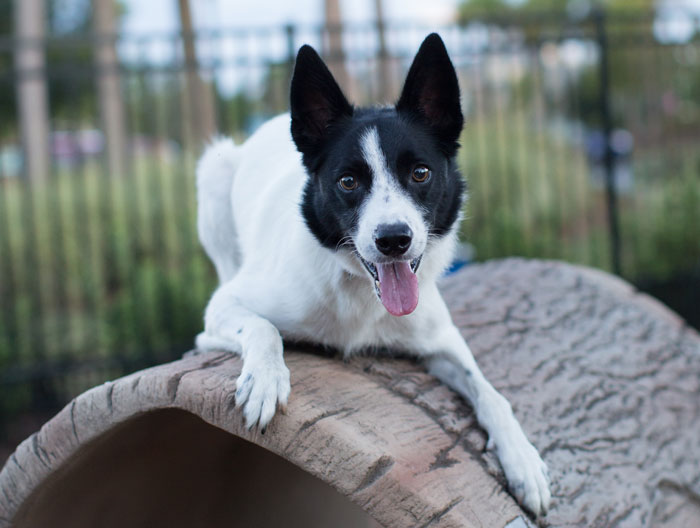The numbers are all bark and bite: Dog parks are one of the fastest-growing public additions to recreation. The Trust for Public Land reported that the number of dog parks in the United States rose 40% between 2009 and 2018.
According to TPL, many public park agencies now have ordinances and sets of design standards that govern the creation, ongoing maintenance, and operation of dog parks. “However, most important, we find that what makes dog parks successful is strong collaboration between the public parks agency, the surrounding community, and a local dog advocacy group—primarily volunteers that have a strong ownership stake in the dog park,” TPL wrote in a 2018 report.
The city of Waukegan, Ill., is a useful example of the creation, maintenance, and evolution of a community’s approach to dog parks. The population of approximately 87,000 enjoys two and soon three dog parks added in the park district’s response to its needs, said Tim Girmscheid, the park district’s manager of planning services. “Waukegan is densely populated, with limited yard space for many residents, especially those in apartment buildings, highlighting the need for dedicated spaces where dogs could safely play and exercise,” said Girmscheid. “Community input, increased demand, and a desire to separate dogs from other users in parks were key drivers behind the creation of the district’s dog parks.”
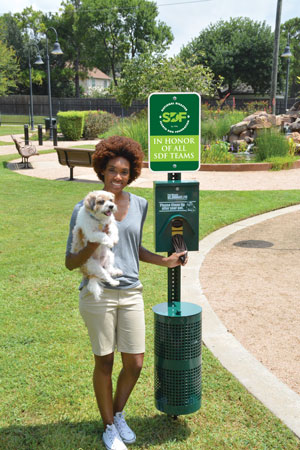
The district’s original, Larsen Dog Park, has evolved since its 2010 inception, said Girmscheid. Originally, a single dog run was installed, which was adequate during a time when the park saw lower usage. However, as interest in dog parks grew, the demand for more specialized spaces increased. The original single dog run saw conflicts arise between larger and smaller dogs. In response, the district added a small dog area.
As the park continued to gain popularity, community members expressed a desire for additional features, and with their support, the district installed a dog agility course in 2013, providing a space for dogs to train and burn off energy. However, as usage continued to grow, it became clear that the original small, gated entry was inadequate for the increased traffic.
A major renovation in 2024 was modeled after a successful design by the Lake County Forest Preserve, incorporating heavy-duty fencing and self-closing doors to improve durability and reduce future maintenance costs. The new entryway was installed on a concrete pad to keep dogs from digging under the gate and running away. A solo dog area was also added during this renovation, designed specifically for dogs that don’t get along well with others or are recovering from injuries or surgeries.
“This new space allows for a more peaceful environment for these pets where they aren’t interrupted by other dogs,” Girmscheid said. The district added the newer two dog parks as a result of the popularity of the first and the needs of the community, said Girmscheid. The process of creating and refining the parks has provided valuable insights that continue to shape the district’s approach to dog park management, he said.
“From the initial launch to the subsequent additions, it has become clear that the demand for dog parks in Waukegan is steadily increasing, and as more residents seek spaces to exercise and socialize their pets, it’s vital to anticipate future needs and plan for additional park expansions or enhancements,” said Girmscheid.
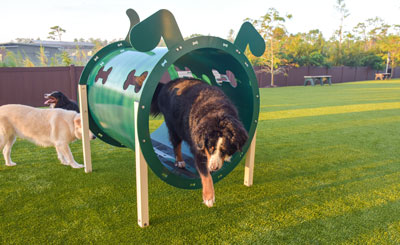
While other nearby facilities charge at least $200 per year for usage, Waukegan Park District’s decision to keep the dog parks free ensures that everyone in the community, regardless of their economic situation, can enjoy the spaces. This accessibility fosters inclusivity and ensures all pet owners have a place to safely bring their dogs, said Girmscheid.
Throughout the process, pet owners have consistently voiced suggestions, which have significantly influenced park features. “Whether it was the addition of the small dog area, the dog agility course, or the recent renovation, we have worked to respond effectively to these requests,” said Girmscheid. “Ensuring that dog owners feel heard has fostered a strong sense of community ownership and pride in the parks.”
He said that adding designated small dog areas has also proven to be a crucial lesson in reducing potential conflicts between larger, more energetic dogs and smaller or less aggressive pets. This approach helps minimize conflicts between dogs and people, particularly concerning aggressive behavior, excessive barking, or waste management.
The parks feature dog waste disposal stations and water fountains. At one park, additional features such as a newly installed agility course enhance dog training experiences, while the pet recovery area ensures dog wellness and safety. Benches on concrete pads have been added for a more comfortable patron experience, and a monarch butterfly waystation adds biodiversity and promotes pollinator health.
The district promotes the parks in several ways, said district Marketing and Community Relations Director Shelby McDonald. Social media was a key component to the strategy. “Eye-catching graphics and informative posts are regularly shared across various platforms, reaching a broad audience of local residents,” McDonald said. “These posts highlight the parks’ unique features, amenities, and general rules, encouraging responsible and enjoyable usage.”
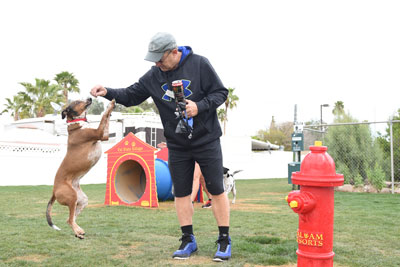
A promotional video in English and Spanish was also created, offering a dynamic overview of each dog park. The video emphasizes the different components of the parks while detailing the specific rules to ensure safety for both dogs and owners. Additionally, both parks are featured in the district’s weekly newsletter.
Keeping the parks clean and safe is no small chore, said Rafael Ayala, manager of park maintenance. Larsen Dog Park requires consistent attention, with tasks like waste removal and trash receptacle changes performed three times a week. Mowing and detailed work are carried out once a week for eight months. In the winter months, salt-free snow removal is necessary twice a week. Additionally, the park’s amenities, such as fencing and benches, undergo monthly inspections and repairs.
Harrison Forbes, dog park design spokesperson for a Chattanooga, Tenn.-based provider of recreation and play equipment, said there’s much to consider when communities have a blank slate for a dog park plan. The first hurdle for most new dog parks is size and shape, he said. “The gift and curse of dog parks is that it’s not a regulated size like a basketball or tennis court,” Forbes said. “However, this allows for tremendous flexibility and creativity to utilize available spaces, and many times design a dog park in existing park areas, thus taking advantage of already built infrastructure, such as parking and bathrooms and high visibility and known location to the community.”
Often overlooked in dog park design and furnishing is dog behavioral science, Forbes said. Dogs see things and behave in very different ways than humans, so things to consider are the flow in and out of the entrance to try to eliminate bottlenecks, and no harsh angles in the fencing, where a dog can feel trapped or cornered if it’s running with a big group.
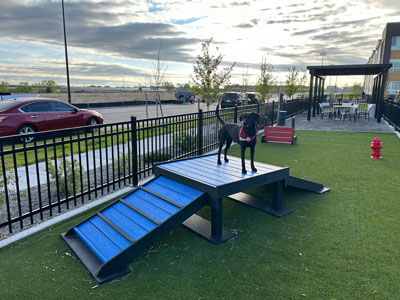
“Having seating structures away from the fence so dogs can’t use it like a ladder and escape, spreading out seating areas for humans throughout the park to dissipate traffic,” said Forbes. “The layout and design of equipment is also important. Too often cities will just arrange pieces of equipment in a grid pattern across the park, but it is better to line up and group equipment in a functional progression and also leave an open long space or runway for people that like to throw a ball or frisbee and need a long open space for those activities.”
It’s very important to consider the dog-size demographics of the area, said Forbes. If your dog park is adjacent to a lot of apartments or multifamily units that have a weight restriction, there will probably be a disproportionate number of small dogs, so consider increasing the size of the small dog area and amenities in the dog park, he said.
“A typical dog park should have about 70% of its space for large dogs and 30% for small dogs,” Forbes said. “However, that can and should be adjusted based on the demographics. I feel like this is old news now, but all dog parks need to have separate areas based on size. Many people with small dogs will avoid a dog park that takes all sizes.”
Forbes said plenty of shade is for both animals and people, for safety as well as to spread out park usage throughout the day to reduce overcrowding. Don’t scrimp on the play equipment, he said. “Just as we wouldn’t expect a parks and recreation department to fence in a field, place a bench, and call it a children’s playground, the same principle now applies to dog parks,” said Forbes. “Communities increasingly look for well-equipped, engaging spaces where their dogs can play, socialize, and stay active. Offering quality features reflects the evolving expectations of the public and helps foster vibrant, enjoyable spaces for pets and their owners alike.”
Dog park equipment has evolved significantly over the years, moving away from DIY wooden structures with short lifespans to well-designed metal and synthetic equipment built to last 20-plus years, Forbes said. Using equipment like stairs, jumps, and tunnels teaches dogs practical, confidence-boosting skills that translate into everyday life, and these exercises foster a deeper training bond between dogs and their owners.
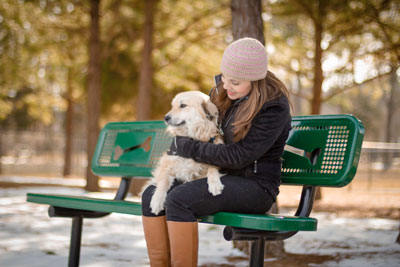
“However, it’s not just about ensuring your dog gets enough physical exercise—providing mental stimulation is just as crucial,” said Forbes. “This reflects an important shift in how we view dog parks today. Training on agility equipment gives dogs meaningful challenges to solve, offering them mental fulfillment in addition to physical fitness. Working together through new obstacles helps build your dog’s confidence and strengthens the bond between pet and owner.”
Forbes said even a low-budget dog park should include at least three pieces of agility equipment in each designated dog area, adequate seating for owners, pet waste stations, available water for thirsty pups, and secure fencing with a double-gated entry to ensure safe transitions in and out of the park. These basic amenities create a functional and enjoyable space for both dogs and their humans.
Parks with more resources might feature interactive water elements like fountains and sprayers, along with elaborate agility and playground equipment, tunnels, and even slides. Covered seating areas for owners add comfort, while foot/paw wash bays at the entrance keep things clean and welcoming. “And, of course, plenty of open space for dogs to run freely ensures they can release all that extra energy and get their wiggles out,” said Forbes. “Whether it’s a simple setup or a tricked-out park, thoughtful design and amenities make a world of difference.”
Forbes said dog parks can provide revenue even without charging entrance fees by becoming hubs for community engagement. “There are countless creative ways to market a dog park and keep the public involved,” he said. “These include holiday-themed events like Halloween costume contests or photos with Santa, ‘Mardi-Growl’ parades, and mixers to welcome new residents. Hosting meet-a-trainer days or partnering with local shelters for adoption events adjacent to the park can further enhance its role as a community epicenter.”
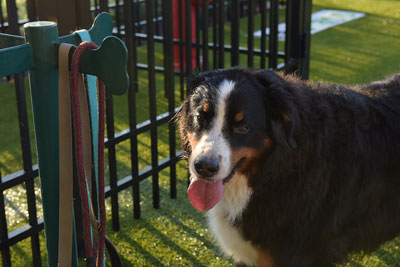
Another way to generate revenue from a dog park is to offer local businesses a chance to sponsor pieces of equipment, said Nora VandenBerghe, COO of a Washington-based dog park design and equipment company. “They purchase the equipment, which helps to offset the cost, then benefit from free advertising along with a partnership opportunity to market the park and any subsequent events through their channels as well,” she said. “It’s a win-win!”
Manufacturers of dog park equipment are also great resources for design tips. VandenBerghe said behavioral science and anatomy also goes into equipment design. For instance, dogs are less likely to want to initially try or continue to use the equipment if they lose their footing or if there are visual barriers, she said. “That means all our walking surfaces, including our tunnel interiors, are incredibly slip-resistant without requiring elevated step strips or anything that could catch their nail/claw,” VandenBerghe said. “We also know that most dogs in a park setting are not trained in agility, so our ramps are extra-wide, capped at three feet high with a low, moderate angle. And contrary to popular belief, dogs are not totally color blind so we offer several colors that they can easily see.”
She said implementing dog behavior into park design makes sense from both a safety and comfort perspective. Aside from separating large and small dogs and installing some sort of entrance and exit controls, dog park design should include agility areas with a minimum of six feet between any component and the fence line because dogs like to run along the fence.
VandenBerghe said the dos and don’ts for dog park design and furnishing include:
- DO: incorporate ADA accessibility, benches, shade shelters, and offer a hand-sanitizing and rinsing station if there isn’t a restroom within the park; maintain equipment; offer agility components that are size-appropriate or suitable for all dogs; maintain the surfacing to keep it free of holes or other hazards; ensure there are enough pet waste pickup stations that are regularly stocked with bags to help with compliance.
- DON'T: overcrowd a park with equipment or source equipment from a company that doesn’t specialize in dog parks.
VandenBerghe said a basic park should include at minimum pet waste stations, a bench or two, a drinking water source, signage, and one to two pieces of equipment. “We always recommend a tunnel and a jump as they are easy agility components for a dog to learn how to use, and they really enjoy the enrichment,” she said.
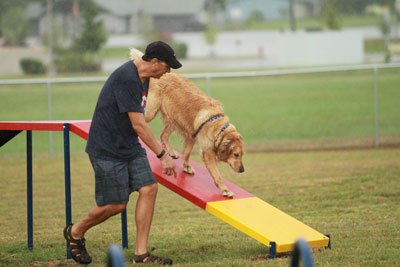
An amenity-rich park might include custom colors with larger agility sections and six to 15 pieces of equipment and custom water sources in each area along with a third dedicated area for senior or shy dogs, water fountains and a pet wash, multiple seating areas with shade shelters, a spray water feature or splash pad, and onsite facilities such as a restroom.
John Sarver, director of design for another equipment company based in Indianapolis, has budgeting tips as well. Fencing and surfacing will be two of the largest expenses when building a dog park, he said.
“You also need to keep in mind, bigger is not always better as you have to remember the cost to maintain the park,” he said. “Sometimes the larger parks do not get properly or regularly maintained because the sheer size is just too much to keep up with. So, step number one is coming up with a design in mind that fits the budget based on the variable elements needed; water fountain, fencing, surfacing, access and security, concrete accessibility, play and agility equipment, seating, lighting, parking, and other concrete needs as well as utilities if needed.”
Sarver said the basic necessities for a dog park would be an accessible sidewalk and entrance area with a 5-foot-tall fence around the whole dog park. The park should have at minimum a drinking water fountain, an adequate number of pet waste stations, and play and agility products for the dogs to exercise on. Some of the other items that would be considered great to have in addition would be a shade or shelter structure, bathroom utilities, lighting, and security cameras.
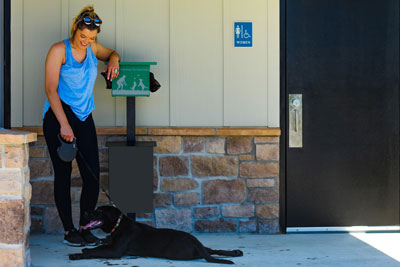
Amanda Sorley, marketing manager for a Houston-based pet waste equipment company, said a great way to foster a sense of community is thematic, adding signature touches “that reflect the local vibe.”
“For example, try incorporating your city’s sports team colors into the equipment and visual features,” she said. “It will make the park feel more connected to the community while simultaneously opening the door to fundraising opportunities.”
Another avenue for adding personalized elements is by focusing on enhancing your park must-haves, such as customized trash management products and pet waste stations.
“Posting custom signage with eye-catching designs and messages that reflect your park name, community rules, or local sponsorships can all play a part in achieving a memorable look,” said Sorley. “By infusing the park with just a little personality and community spirit, you can create a space that stands out, gets locals involved and truly represents the area it is in.” RM



